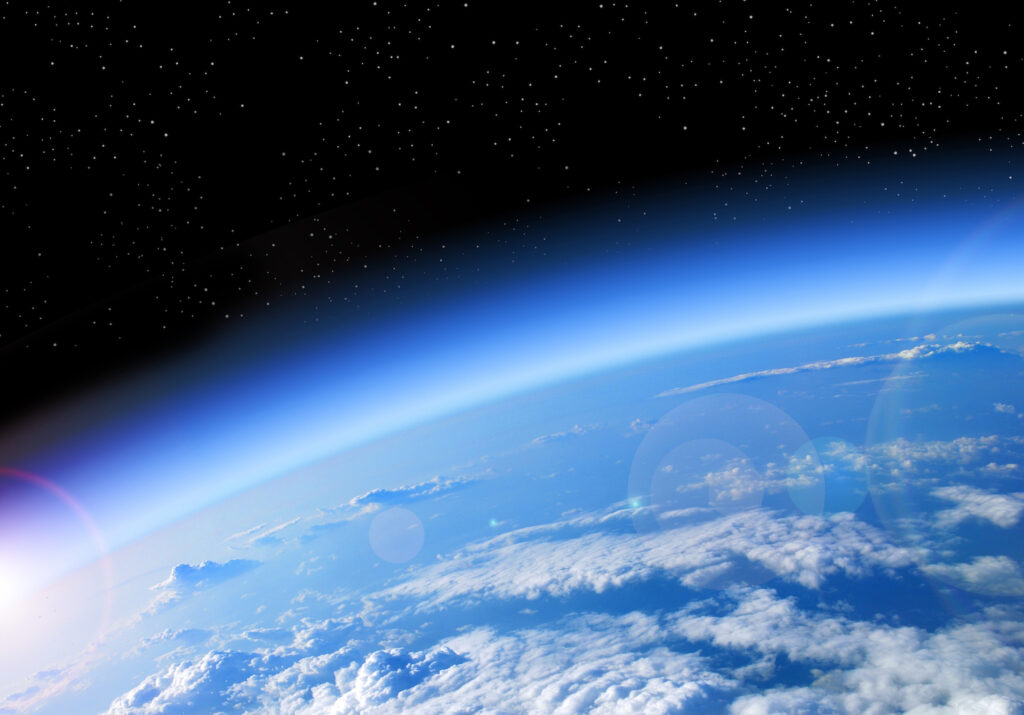The Atmosphere – Composition, and Layers

Earth is a home for many living things and is one of the planets which support life. Have you ever thought, what makes the Earth a livable planet? Here is the answer. Earth is the source of living since it is surrounded by the vital component known as the atmosphere. It is also the source of minerals like petrol, oil, gold, rare-earth magnets, and many more. The atmosphere is the main element for balancing the climate of the Earth.
An atmosphere contains the air that we breathe and is a blanket of gases that surrounds Earth. The atmosphere is held close to Earth due to the presence of Earth’s gravitational attraction. In this article, let us learn in detail about layers of atmosphere and the importance of atmosphere.
Layers of Atmosphere
After understanding that Earth is the source of various minerals like petrol, oil, gold, water, granite, copper, diamond, and rare earth magnets, let us now understand the composition of the Earth’s atmosphere. It is composed of 21 percent oxygen, 78 percent nitrogen, argon along with other gases. It also contains traces of gases like carbon dioxide, methane, water vapor, and neon.
The atmosphere is divided into 5 types:
- Exosphere
- Thermosphere
- Mesosphere
- Stratosphere
- Troposphere
Exosphere
It is the uppermost layer of the atmosphere and is usually considered as outer space. The gravitational force felt by this layer is comparatively less, and hence molecules of gas escape into outer space. It is composed of particles of hydrogen, helium, nitrogen, oxygen, and carbon dioxide that are spread widely.
Thermosphere
The second-highest layer of the atmosphere is the thermosphere. The temperature of the thermosphere increases gradually with height and can reach a maximum of 1500 degrees Celsius. Phenomena like the Northern Lights, Southern Lights, aurora take place in the thermosphere.
Mesosphere
The mesosphere extends 85 kilometers above the Earth’s surface. The upper boundary of the mesosphere is called mesopause. The temperature here can reach as low as -90 degrees Celsius.
Stratosphere
The second-lowest layer of Earth’s atmosphere is known as the Stratosphere. The stratosphere extends 50 km above the troposphere. The temperatures in the stratosphere increase with altitude. The top layer of the stratosphere is known as the stratopause.
Troposphere
The troposphere is thickest at the equator, and thinner at the North and South Poles. The troposphere is the lowest and the closest layer of the atmosphere to the Earth. In the troposphere, the temperature decreases with increasing altitude. Another interesting fact about the troposphere is that most clouds appear in the troposphere since 99% of the water vapor present in the atmosphere is found here.
Importance of Atmosphere
After learning the composition, and the layers of the atmosphere, let us know its importance. The atmosphere is the key element of the Earth which helps in various ways.
- The atmosphere helps to retain the sun’s heat and prevents it from escaping into space.
- It safeguards from the harmful radiation of the sun.
- It helps in the propagation of sound.
- The atmosphere plays a vital role in Earth’s water cycle.
- The atmosphere aids in keeping the Earth’s climate moderate.







